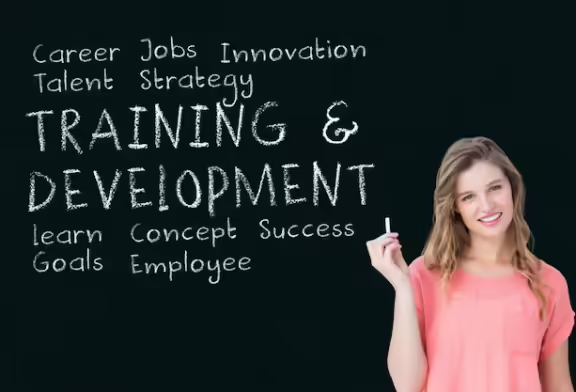As per the Harvard Business Review, 58% of employees lack clarity when it comes to performance appraisals. Plus, 50% lack clarity regarding their job roles.
Competency frameworks, when done well, not only establish clarity around the expectations associated with each job role but also link the organisation’s growth to individual goals. With innovation, diversity, and remote work gaining priority, competency models that accommodate and account for these are a need of the hour.
As per a survey, 94% of global corporate leaders agree that trust is important to improve the performance of an organisation. A CVF framework that establishes transparency can help build on this. Further, using a CVF framework that is aligned with the company’s objectives, there can be up to a 92% reduction in wrong hires.
Step 1: Understanding the Competency and Values Framework (CVF)
In broad terms, a CVF framework establishes clarity vis-a-vis job roles. The Competency and Values Framework defines which skills, knowledge, and traits are essential for a particular role. Further, it also outlines the ethical standards that every worker associated with the job and the organisation has to uphold.
Purpose of Competency and Values Framework
Some key purposes that the CVF framework serves are:
- Establish clear expectations for every job role.
- Ensures ethical conduct among all employees.
- Sets a guide for the recruitment and selection process.
- Streamlines the performance management system with effective goal setting and feedback.
- Helps map out career plans and facilitate professional development.
- Fosters a cohesive and positive work environment.
- Aligns the personal goals of the workers to that of the organisation.
Competency and Values Framework vs. Core Competency Framework
A core competency framework accounts for unique capabilities and training that are essential to perform in any job role. Technical and educational know-how, problem-solving skills, and work experience and expertise form the basis of any core competency framework.
When this framework accounts for the ethics and core values of the organisation, it goes one step further to become the Competency Values Framework. Some of the additional criteria that a CVF framework accounts for are integrity, empathy, and EQ.
Step 2: Aligning the CVF Framework with Organisational Goals
Simply having a Competency Values Framework is not enough for an organisation; the criteria that the organisation stresses on should also be accounted for by the framework. In turn, this will help leverage the strengths of the organisation to gain an edge over the competition.
Thus, to create a CVF framework that aligns with organisational goals, it is important to first identify the said goals. Then, assess the requirements for your workplace and tailor them to align with the objectives that need to be met by the workers.
Communicate this to your team to establish clarity so that everyone can adhere to this. Further, be sure to provide regular feedback to your employees using the CVF framework to foster a workplace that is oriented to continuous development.
Customising Competency Value Framework for Your Business
To tailor the CVF framework to meet your organisational goals, do the following:
- Identify which traits and skills are a priority for your business.
- Check with the stakeholders and clarify which of these are the core values
- Conduct a thorough analysis for each job.
- Streamline the CVF framework by listing the job roles and outlining the proficiency levels.
- Outline the specific behavioural traits necessary for each role.
- Validate and update the CVF framework regularly to maintain relevance.
Integrating Values Framework into Leadership Competency Framework
To streamline succession planning along with the recruitment and appraisal system, match the competencies with skills and traits that are necessary to progress to a leadership role. Further, to be a leader in any organisation, an employee must demonstrate the following competencies:
- Conflict management skills
- Problem-solving skills
- Decision-making skills
- Ability to manage change
- Social and emotional intelligence
- Interpersonal skills and people management
- Ability to coach others
- Ability to learn and adapt
- Managing oneself
- Industry and subject matter expertise
When aligning the CVF framework with the Leadership Competency Framework, account for the parameters that your organisation recognises as essential to flourish in a leadership role.
Step 3: Developing a Competency and Values Framework Model
To start, define the skills and behavioural traits against every job role. Then, define the core competencies that are important to your organisation. Add these to your competency matrix alongside the proficiency that the role calls for.
Mapping Core Competencies and Organisational Values
With the help of your management team, list the skills that are felt as the essentials against specific job descriptions. Then, schedule a consultation with the managers as well as the workers to validate these skills and traits. Be sure to make additions based on the inputs that you get.
Align these with the core competencies and values that the organisation sees as a must. Go through the CVF framework and list the skills and behavioural traits alongside the necessary proficiency levels.
Using the CIPD Competency Framework for Guidance
To help organisations learn which competencies are a must, the CIPD competency framework acts as an excellent guide. This framework establishes a principles-led and data and outcome-oriented system.
Further, it categorises the skills necessary as follows:
- Core Knowledge, which encompasses culture, behaviour, business acumen, etc.
- Core Behaviours that include ethical practice, professionalism, decision making, etc.
- Specialist Knowledge like experience, resourcing, analytics, etc.
This can serve as a framework to create a more tailored Competency Values framework that is in line with the organisational goals.
Step 4: Implementing the Competency and Values Framework in HR Processes
Once the CVF framework has been developed, it is time to deploy it. Train all your employees to ensure an easy roll-out process for the Competency and Values Framework. Further, it is best to ensure stakeholder buy-in for a better, more successful CVF framework.
Integrating the CVF Framework into Recruitment and Performance Management
Once the competency values framework is ready, it is time to integrate them with the HR processes. Incorporate the competencies alongside every job description. Use the CVF framework to streamline the performance management and appraisal system.
Further, you also use the CVF framework to identify any training gaps among the employees and craft tailored training programs to boost their skills. To add, a CVF framework will also help streamline the recruitment process and reduce the chances of wrong hires.
Implementing Employee Feedback Software and Competency Framework
Once the competency framework sets the expectations that are associated with each job role, the Employee Feedback Software can gather performance data for indicators and criteria listed in the framework.
Thus, both competency frameworks and employee feedback software can work in tandem to create a streamlined performance management and appraisal system. Further, these can be used to track the progress of each employee, conduct reviews, and create action plans to help meet any skill gaps that may occur.
To add, these can establish a way to provide constructive feedback to every employee in the organisation.
Step 5: Training and Continuous Development within the CVF Framework
Once the CVF framework is in use, it is time to make the most out of it. This implies taking a balanced, adaptable approach to growth and development.
By using a CVF framework, you can improve the performance appraisal process, better align the employee goals to organisational ones, and create a stronger talent pipeline.
Developing a Capability Framework for Employee Growth
Whether an employee being evaluated or placed in a certain role has the capability to perform in said role can be determined with accuracy using a capability framework. Further, it helps align key skills to the requirements of the organisation. This, in turn, helps create a roadmap that facilitates development, career progression, and succession planning.
Usually, a capability framework does the following:
- Accounts for the necessary skills, knowledge, and traits.
- Analyzes the skill gap.
- Helps create developmental plans.
- Streamlines the performance management process.
- Identifies the best employees for succession planning.
Conclusion
By selecting one of the competency models and deploying an apt CVF framework for your organisation, you can streamline several HR processes. Primarily, these include recruitments, appraisals, and employee feedback. Further, a competency and values framework will help you design tailor-made training programs that best fit your company.
Thus, evaluate the competency frameworks available and deploy one today to improve all your HR processes.





